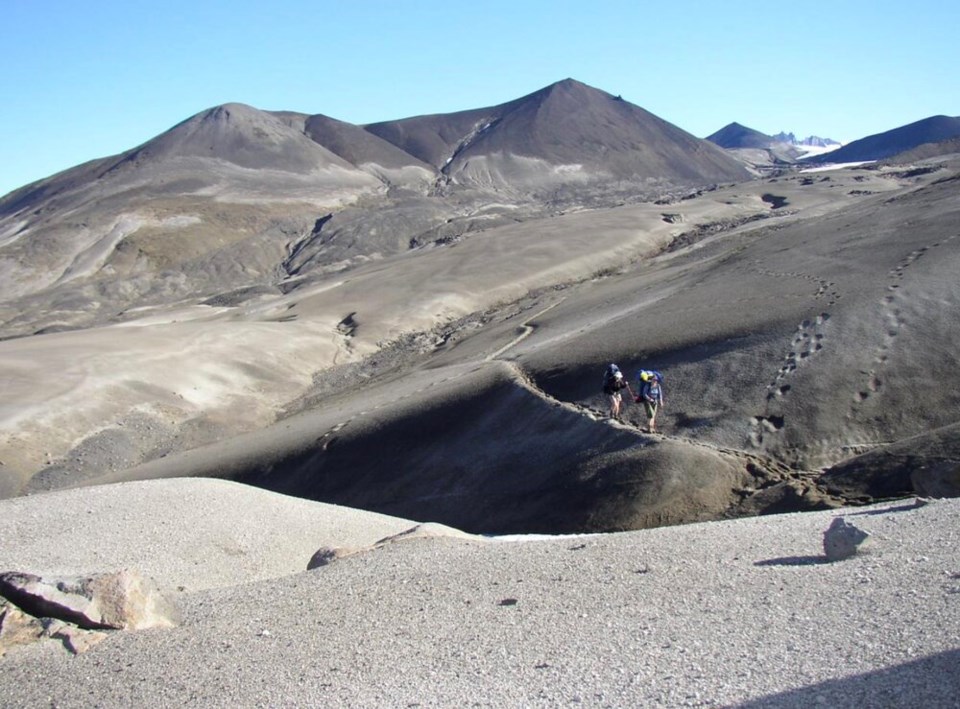The Tahltan Nation has renamed a 3,500-hectare slice of protected land adjacent to one of Canada’s tallest volcanoes “Ice Mountain” in a nod to the glaciers that cover its slopes.
Established in March 2021, the Mount Edziza Conservancy will now be officially known as Tenh Dẕetle Conservancy (Ten-thet-luh), translated as “Ice Mountain” or “Ice Mountain Lands,” according to a joint press release from the Tahltan Central Government and the province.
Sitting on the eastern slopes of Mount Edziza — a 2,787-metre stratovolcano that began erupting roughly four million years ago — the conservancy is home to a number of iconic species, including grizzly bears, caribou and mountain goats.
The mountain is also the site of at least 100-plus historic obsidian quarries. Because of its natural tendency to flake apart into razor-sharp edges, the Tahltan people created weapons and tools from the volcanic glass for thousands of years.
Those volcanic quarries are thought to be the main source of obsidian supplying a pre-colonial trading network that stretched back at least 10,000 years and extended as far away as Alaska and Northern Alberta, according to the Royal British Columbia Museum.
The official renaming of the conservancy came through a consensus between the Tahltan’s three main communities: Dease Lake, Telegraph Creek and Iskut.
Renaming of the mountain better reflects the nation’s heritage, while affirming the Tahltan Nation’s rights and title, said Tahltan Central Government president Chad Norman Day in a prepared statement.
The conservancy was also created to balance Tahltan concerns over mineral developments in the area. Larger than the country of Portugal, Tahltan Territory includes 70 per cent of B.C.’s “Golden Triangle,” a tract of land bordering the Alaska Panhandle that is rich in minerals.
The renaming of Ice Mountain comes 10 months after the Canadian mining company Skeena Resources said it would return a mineral tenure it held near Mount Edziza Provincial Park to establish the new 3,500-hectare conservancy.
Weeks earlier, the Tahtan Nation announced it was investing $5 million in the development of a mine at Skeena’s Eskay Creek gold-silver project. Sitting 125 kilometres south of Iskut, in the 1990s, the mine was one of the highest-grade gold mines in the world, according to Skeena Resources. The project is looking to explore what’s left by digging an open-pit mine.
“The Skeena partnership is another step by the Tahltan Nation in becoming meaningful equity partners in the mineral exploration industry,” said the joint release.




